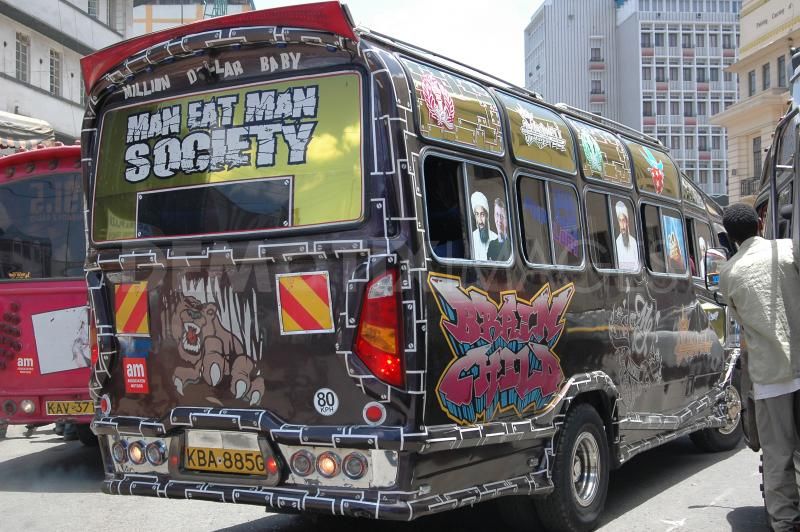The Journal of Transport Geography just published a study that I worked on with Kayleigh Campbell, Jacqueline Klopp, and Jacinta Mwikali Mbilo. The question address is “How important is informal transit in the developing world?” (Jump to the paper.)
What’s informal transit?
A lot of people get around Nairobi in works of art on wheels called “matatus”:

The matatu system is extensive, essential, efficient, and completely unplanned. In Nairobi’s hurry to accommodate the transport needs of a population that grows by 150,000 people a year, it has ignored this piece of infrastructure. Sometimes it has even undermined it.
The goal of this paper is to measure how important matatus are, in the context of the whole range of transportation options and income groups.
What does this paper bring to the table?
This is one of very few analyses on informal transportation networks anywhere, building upon the incredible work of the Digital Matatus Project, co-led by our co-author, Dr. Klopp.
It’s also fairly unique in looking at transport accessibility in the developing world at all (most work on accessibility is done in rich countries). Not surprisingly, transport needs in developing countries are different.
What do we find?
Some of the results are unsurprising: matatus boost measures of access by 5-15 times, compared to walking, with accessibility highest in the central business district. Of somewhat more interest:
- Matatu access drops more quickly then driving or walking accessibility as you move away from Nairobi’s center. That’s an indication of the structure of the matatu network, helping people in Nairobi center the most.
- Controlling for distance from the center, richer communities have low accessibility. Many people from those communities have cars, but it matters because their workers do not. In fact this communities tend to be quite isolated.
- Tenement housing has quite strong accessibility, because matatu networks tend to organize around it.
What tools do we have for research in this area?
We developed quite an extensive body of tools for studying (1) accessibility in general, and (2) transit networks in particular. If you find yourself in the possession of a cool new transit network database, in “GTFS” format, we have code that can analyze it. Prompt me, and I can work with you to open-source it.
Enjoy the new paper! Accessibility across transport modes and residential developments in Nairobi

0 responses so far ↓
There are no comments yet...Kick things off by filling out the form below.